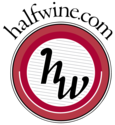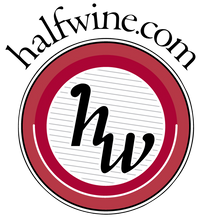Back to: Individual Half Bottles
Rosé
Rhône
Grenache Based
Cork
Bone Dry
No Oak
ABV 14%
Tasting notes
Vibrant salmon-coral in color; this wine is bone dry, full-bodied and full of fruit on the palate, with the lusciousness and depth that have made the wines of Tavel famous. This is a rosé made for accompanying food and will go with every part of the meal, from the first course through to dessert
Why we recommend this wine
We are not great fans of rosé because, in most cases, it is a winemaker’s afterthought but Tavel, like Provence, specialises in making it. Tavel differs from Provence in that, in Provence, the fashion seems to be to make their rosé as light in colour as possible; in Tavel they go for deeply hued, fuller bodied rosé. This example regularly obtains scores over 90 points
The wine
Not many wines have 7 varietals in their blend like this Tavel - Grenache (45%), Clairette (20%), Cinsault (15%), Mourvèdre (8%), Syrah (6%), Bourboulenc (4%), Picpoul (2%). Grapes are handpicked from Château d’Aqueria’s own vineyards, which span 163 acres across the sandy slopes of Tavel. The mesoclimate is ideal for cultivating Grenache and crafting crisp, fresh rosé wines. Using its cutting-edge weather station located in the heart of the vineyards, Château d’Aqueria precisely monitors weather conditions and adjusts vineyard practices accordingly. The grapes are hand harvested and destemmed, followed by a maceration to extract color. The grapes are then pressed and each variety is vinified separately, undergoing temperature-controlled maceration and fermentation in stainless steel vats for 15 days. Maceration is a key step in crafting these Tavel wines as this maceration extracts color, structure and body. Once the ideal color has been obtained, the entire tank is emptied and the must is then added back to the free-run juice. The varieties are blended two by two to enhance aromatic complexity. The wines see no malolactic fermentation and no oak contact. The winemaker assembles an initial blend in November and then a second blending takes place in January before bottling.
The wine estate
The fascinating history of Château d’Aqueria begins in 1595, when Louis Joseph d’Aqueria purchased this area of Tavel known as “Puy Sablonneux” from the monks at the Abbey in Villeneuve les Avignon. This was choice land for vine-growing. His son, Robert d’Aqueria, hereditary Count Palatine, built a home which was transformed in the 18th century into the Château as it stands today. After the Count d’Aqueria, many families owned the Château d’Aqueria. It has now been in the hands of three generations of the Olivier family. Jean Olivier, a PhD in Law, purchased the estate in 1919. His son-in-law Paul de Bez began managing the estate in 1943, followed by his grandsons Vincent and Bruno, who today continue to run the magnificent château. Château d’Aqueria is 98 hectares of land of which 68 hectares are vineyards, planted on a single tract of land surrounding the Château. In 2014, the chateau obtained the High Environmental Value certification. This certification attests to compliance throughout the estate with environmental performance thresholds involving biodiversity, pesticide products, fertilization management and water resources.
aqueria.com
Food and wine
Delicious with shellfish, salad and poultry. The chateau recommends red meat - Baron d’agneau aux herbes – cheeses and spicy foods. Refer also to our food and wine pairing guide, click here.
Did you know?
Maceration is a process in winemaking in which the crushed grape skins are left in the juice until they have imparted the desired color or the proper amount of tannins and aroma.
Vibrant salmon-coral in color; this wine is bone dry, full-bodied and full of fruit on the palate, with the lusciousness and depth that have made the wines of Tavel famous. This is a rosé made for accompanying food and will go with every part of the meal, from the first course through to dessert
Why we recommend this wine
We are not great fans of rosé because, in most cases, it is a winemaker’s afterthought but Tavel, like Provence, specialises in making it. Tavel differs from Provence in that, in Provence, the fashion seems to be to make their rosé as light in colour as possible; in Tavel they go for deeply hued, fuller bodied rosé. This example regularly obtains scores over 90 points
The wine
Not many wines have 7 varietals in their blend like this Tavel - Grenache (45%), Clairette (20%), Cinsault (15%), Mourvèdre (8%), Syrah (6%), Bourboulenc (4%), Picpoul (2%). Grapes are handpicked from Château d’Aqueria’s own vineyards, which span 163 acres across the sandy slopes of Tavel. The mesoclimate is ideal for cultivating Grenache and crafting crisp, fresh rosé wines. Using its cutting-edge weather station located in the heart of the vineyards, Château d’Aqueria precisely monitors weather conditions and adjusts vineyard practices accordingly. The grapes are hand harvested and destemmed, followed by a maceration to extract color. The grapes are then pressed and each variety is vinified separately, undergoing temperature-controlled maceration and fermentation in stainless steel vats for 15 days. Maceration is a key step in crafting these Tavel wines as this maceration extracts color, structure and body. Once the ideal color has been obtained, the entire tank is emptied and the must is then added back to the free-run juice. The varieties are blended two by two to enhance aromatic complexity. The wines see no malolactic fermentation and no oak contact. The winemaker assembles an initial blend in November and then a second blending takes place in January before bottling.
The wine estate
The fascinating history of Château d’Aqueria begins in 1595, when Louis Joseph d’Aqueria purchased this area of Tavel known as “Puy Sablonneux” from the monks at the Abbey in Villeneuve les Avignon. This was choice land for vine-growing. His son, Robert d’Aqueria, hereditary Count Palatine, built a home which was transformed in the 18th century into the Château as it stands today. After the Count d’Aqueria, many families owned the Château d’Aqueria. It has now been in the hands of three generations of the Olivier family. Jean Olivier, a PhD in Law, purchased the estate in 1919. His son-in-law Paul de Bez began managing the estate in 1943, followed by his grandsons Vincent and Bruno, who today continue to run the magnificent château. Château d’Aqueria is 98 hectares of land of which 68 hectares are vineyards, planted on a single tract of land surrounding the Château. In 2014, the chateau obtained the High Environmental Value certification. This certification attests to compliance throughout the estate with environmental performance thresholds involving biodiversity, pesticide products, fertilization management and water resources.
aqueria.com
Food and wine
Delicious with shellfish, salad and poultry. The chateau recommends red meat - Baron d’agneau aux herbes – cheeses and spicy foods. Refer also to our food and wine pairing guide, click here.
Did you know?
Maceration is a process in winemaking in which the crushed grape skins are left in the juice until they have imparted the desired color or the proper amount of tannins and aroma.




